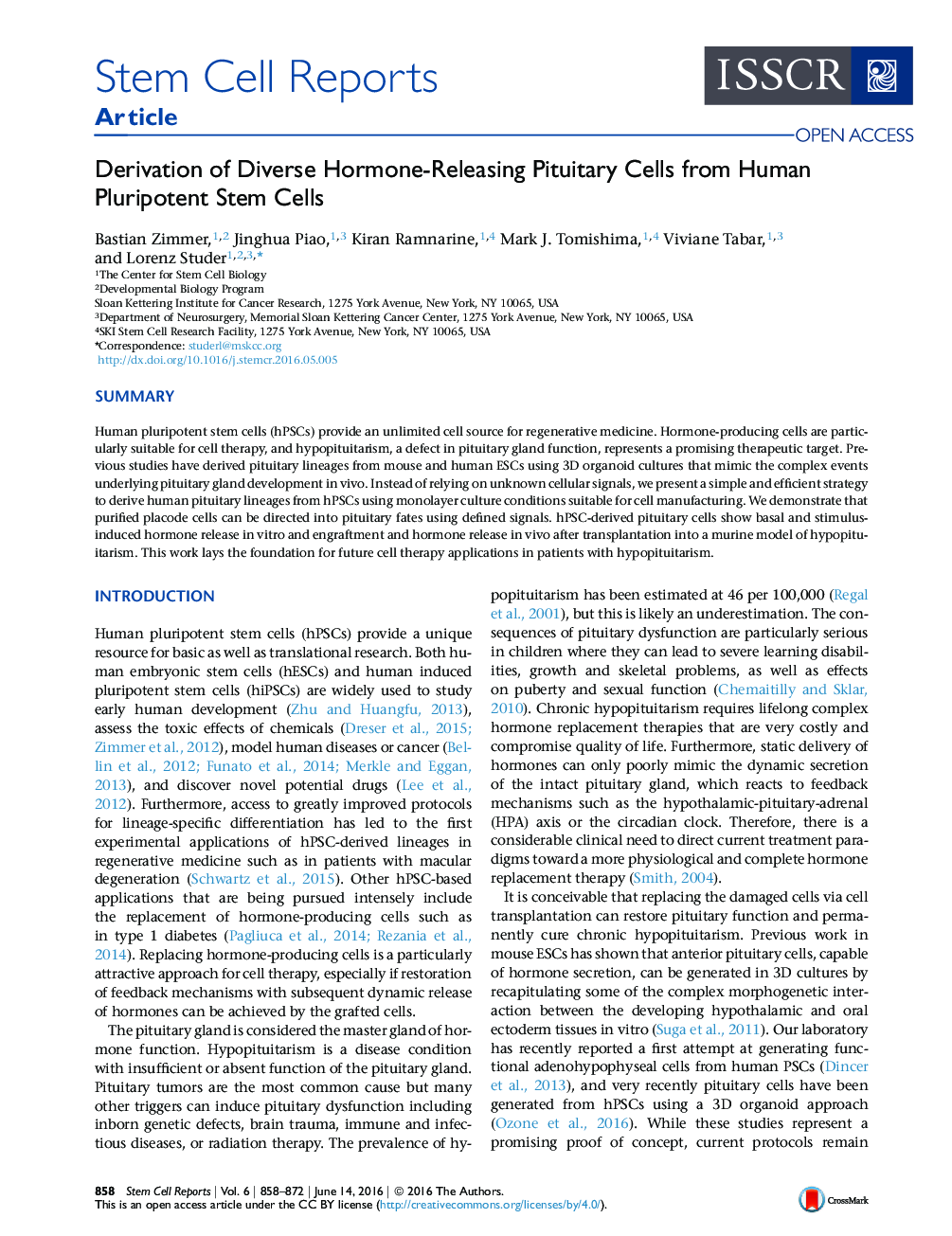| Article ID | Journal | Published Year | Pages | File Type |
|---|---|---|---|---|
| 2093260 | Stem Cell Reports | 2016 | 15 Pages |
•Defined, cGMP-ready protocol to derive anterior pituitary-lineage cells from hPSCs•FGF8 and BMP2 patterning enables enrichment for specific hormone-producing cells•Pituitary cells secrete multiple hormones and respond to physiological stimuli•hPSC-pituitary cells partially rescue a rat model of hypopituitarism
SummaryHuman pluripotent stem cells (hPSCs) provide an unlimited cell source for regenerative medicine. Hormone-producing cells are particularly suitable for cell therapy, and hypopituitarism, a defect in pituitary gland function, represents a promising therapeutic target. Previous studies have derived pituitary lineages from mouse and human ESCs using 3D organoid cultures that mimic the complex events underlying pituitary gland development in vivo. Instead of relying on unknown cellular signals, we present a simple and efficient strategy to derive human pituitary lineages from hPSCs using monolayer culture conditions suitable for cell manufacturing. We demonstrate that purified placode cells can be directed into pituitary fates using defined signals. hPSC-derived pituitary cells show basal and stimulus-induced hormone release in vitro and engraftment and hormone release in vivo after transplantation into a murine model of hypopituitarism. This work lays the foundation for future cell therapy applications in patients with hypopituitarism.
Graphical AbstractFigure optionsDownload full-size imageDownload as PowerPoint slide
